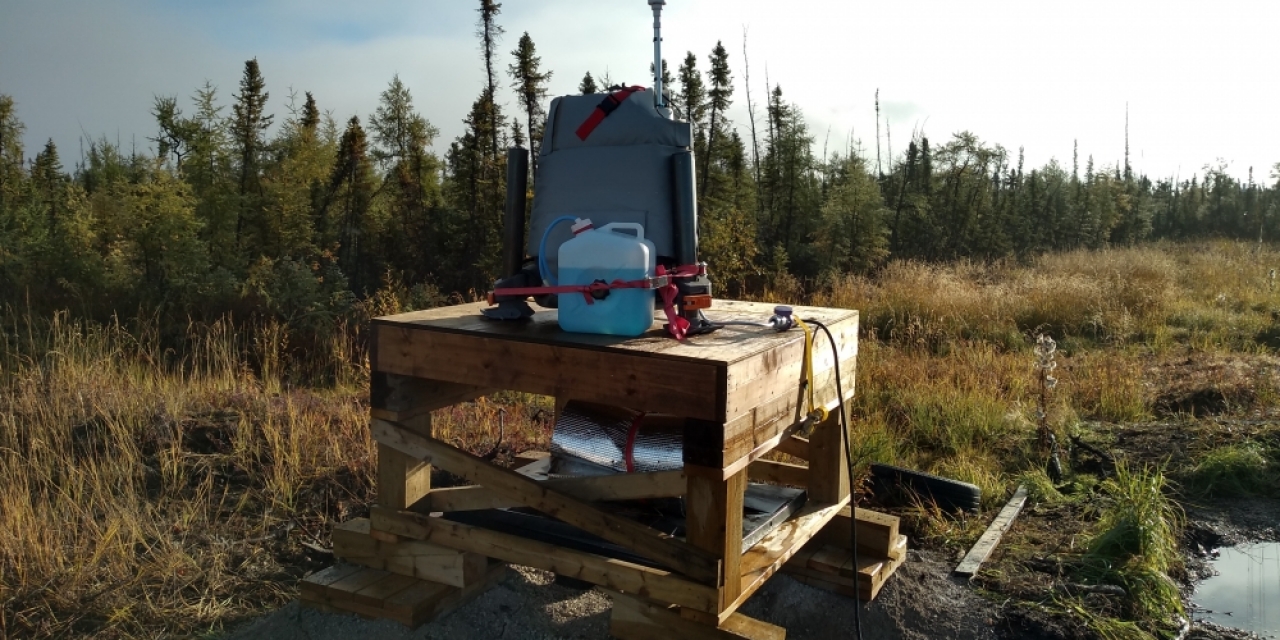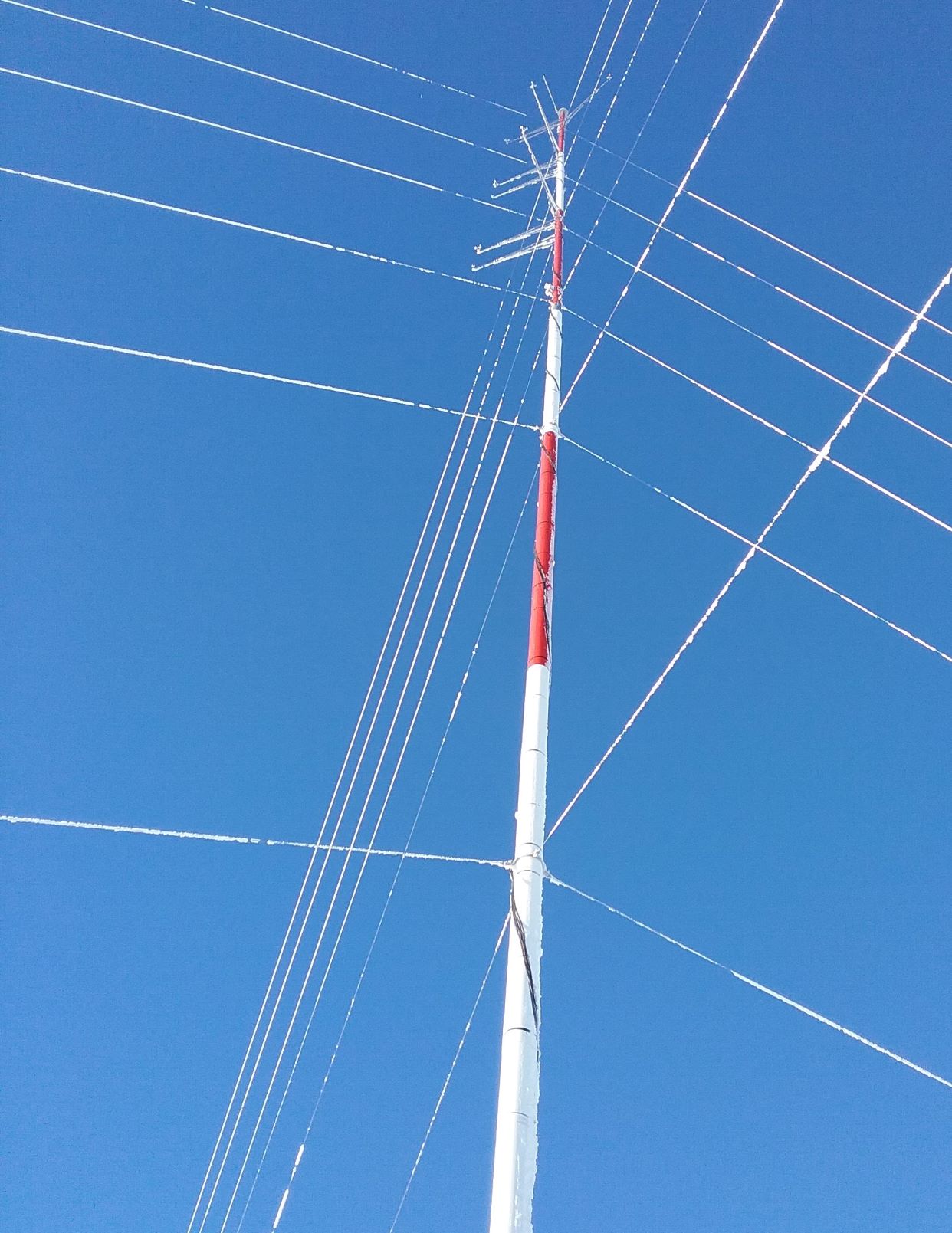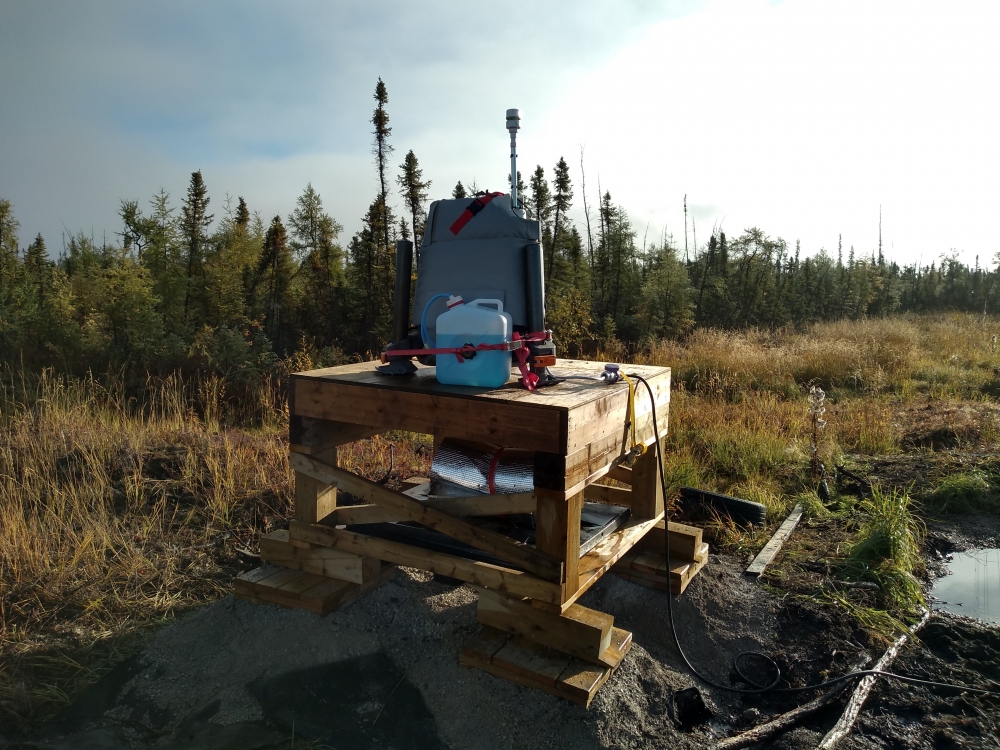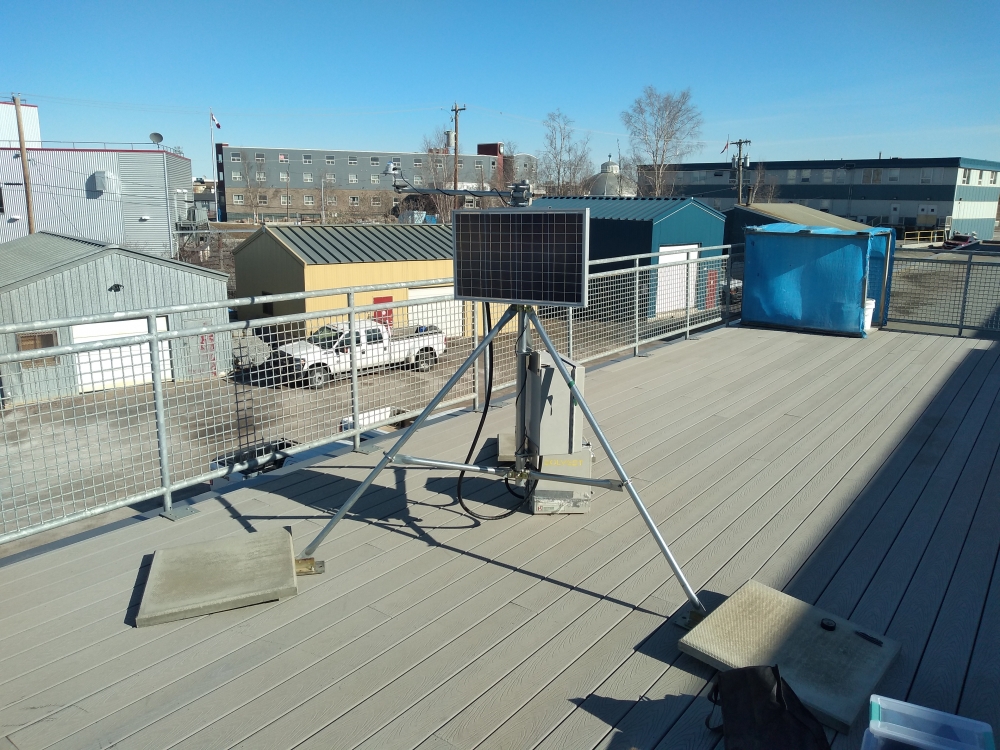
Project Name:
Renewable Energy Feasibility Research Program
ARI Team:
Overview:
Aurora Research Institute (ARI) has worked with several partners, including the Government of the Northwest Territories, Energy Division, to perform wind and solar energy monitoring campaigns across the Northwest Territories. These campaigns produce data that is then used to make informed decisions about future monitoring campaigns and renewable energy investments.

60m Meteorological Tower at Inuvik High Point
Objectives:
Aurora College’s wind monitoring programs have the following goals:
- Build capacity within the NWT for the measurement and analysis of wind speed and solar irradiance data.
- Provide regional and governmental energy decision makers the latest wind and solar data from their communities.
- Advocate for the importance of investment in renewable energy resource assessments in the NWT.
Location:
Wind and solar measurement campaigns have been performed in many communities across the NWT.
If you are interested in any of the reports from communities visited in the past, please see the links at the bottom of this page.
Methods:
Wind Monitoring Equipment
Aurora Research Institute makes use of two pieces of infrastructure to measure wind speed data. Most familiar are meteorological towers. Ranging from 10m to 60m tall, these temporary towers are equipped with anemometers for measuring wind speed and wind vanes for measuring wind direction. These sensors are installed at different heights so that researchers can get an understanding of how the wind changes farther away from the influence of the ground.

ZX300 Wind Lidar deployed in Norman Wells, NT
Developments in Lidar (Light Detection and Ranging) technology now mean that similar measurement obtained from a meteorological tower can now be gathers using remote sensing techniques. Aurora Research Institute has deployed vertical Lidar wind profilers about the size of a washing machine and capable of reading wind speeds up to 250m using a special laser beam. These devices have the advantages of being much smaller and simpler to transport, as well as requiring less ground disturbance to install compared to traditional meteorological towers.
Solar Monitoring Equipment
Solar monitoring hardware can come in many configurations. The image below shows one of the simplest possible configurations, with one sensor reading the power of the sun as it hits a horizontal surface inside the sensor. Another common configuration is to measure the amount of solar energy that bounces off the ground, Earth Albedo, which is very important for understanding how well bifacial solar panels might perform in a certain area. For this, a sensor is placed upside down so that it cannot see the sun, but can only see the ground beneath the monitor. For northern climates, where snow in the winter, and dust in the summer can impact the performance of a solar system, it is also possible to measure the soiling factor. This values provides an idea of how dirty, or snow covered a certain solar installation may be, which can then be used to predict maintenance needs of the site in the future.

A solar monitor installed on the roof of WARC equipped for Global Horizontal Irradiance (GHI) measurements
Project Planning:
Aurora Research Institute works closely with external partners to identify sites for energy monitoring. Once a community or site is identified, ARI works with the local stakeholders to create awareness for the project as well as setup local support for the project. Wind and solar monitoring units require regular maintenance and monitoring which is commonly performed by local contractors.
Schedule:
Wind and solar monitoring campaigns are typically one to two years in duration and are conducted in areas identified by our project partners. Over this time, researchers can get an understanding of the changes in the wind and solar energy that happen from season to season, as well as whether there are changes from year to year that need to be taken into account.
Some projects include micro-siting. Micro-siting is the practice of deploying a wind Lidar unit to multiple locations around the area of interest for short periods of times from one to six months.
Current Deployments:
Norman Wells NT:
- 60m Meteorological tower equipped with both heated and unheated sensors.
- ZX300 wind Lidar co-located with the tower.
Snare Hills NT
- Communications tower equipped with anemometers and vanes.
External Partners:
Environment and Natural Resources.
GNWT Department of Infrastructure, Energy Division.
REPORTS:
REGIONAL
Inuvialuit Region Wind Energy Pre-feasibility Study
Wind Energy Monitoring in Six Communities in the NWT
State of the Art and Economic Viability of Wind Power Development in Arctic Communities
COLVILLE LAKE
Colville Lake Wind Energy Pre-feasibility Study
DELINE
Deline Wind & Solar Energy Pre‐feasibility Analysis Summary
Deline Wind & Solar Energy Pre‐feasibility Analysis
FORT PROVIDENCE
Fort Providence Solar and Wind Summary
Fort Providence Solar and Wind Monitoring Analysis
FORT LIARD
Fort Liard Wind Site Potential
INUVIK
Inuvik Wind Monitoring Update 2016 Inuvik Wind Summary Report: 2015
Inuvik Wind Energy Pre-Feasibility Analysis: 2015
Inuvik Wind Energy Assessment at Storm Hills (2014)
Inuvik Wind Energy Pre‐Feasibility Analysis
Inuvik Wind Energy Pre‐Feasibility Analysis Summary
JEAN MARIE RIVER
Jean Marie River Solar and Wind Summary
Jean Marie River Solar and Wind Monitoring Update
Jean Marie River Wind & Solar Energy Pre‐feasibility Analysis
Jean Marie River Wind & Solar Energy Pre‐feasibility Analysis Summary
LUTSELK'E
Lutselk'e Wind Energy Pre-feasibility Analysis
Lutselk'e Wind Energy Pre-feasibility Analysis Summary
NORMAN WELLS
Norman Wells Wind Energy Pre-feasibility Study
Norman Wells Wind Energy Pre-feasibility Analysis Summary
PAULATUK
Paulatuk Wind Energy Pre-Feasibility Study
2009 Wind Energy Summary Report - Paulatuk
SACHS HARBOUR
Sachs Harbour Wind Energy Pre-Feasibility Study
2009 Wind Energy Summary Report - Sachs Harbour
THOR LAKE
Progress Report for Thor Lake Wind Monitoring – March, 2010
Wind Study for Thor Lake Area - 2009
Progress Report for Thor Lake Wind Monitoring – November, 2010
TROUT LAKE
Trout Lake Wind & Solar Energy Pre‐feasibility Analysis
Trout Lake Wind & Solar Energy Pre‐feasibility Analysis Summary
TUKTOYAKTUK
Wind Monitoring Update for Tuktoyaktuk - Winter 2009
Technical Aspects of a Wind Project for Tuktoyaktuk
2009 Wind Energy Summary Report - Tuktoyaktuk
ULUKHAKTOK
Ulukhaktok Wind Energy Pre-Feasibility Study
2009 Wind Energy Summary Report - Ulukhaktok
WEKWEETI
Wekweeti Wind Energy Pre‐Feasibility Analysis Summary
Wekweeti Wind Energy Pre‐Feasibility Analysis
WHATI
Whati Wind & Solar Energy Pre‐feasibility Analysis Summary
Whati Wind & Solar Energy Pre‐feasibility Analysis
YELLOWKNIFE
Snare Wind Monitoring Update 2016 Potential Wind Farm Locations for the Yellowknife Area
Yellowknife Wind Energy Pre-feasibility Study Yellowknife Area Wind Potential
Keywords
Lidar, Meteorological, Wind, Energy, Measurement, Monitoring, Weather, Speed, Height, Solar, Irradiance, Sun
Updated May 2021
